An underlying sense of humour comes is what come through with an unwavering passion when talking with artist RB Murari. That, and a very strong sense of “art for art’s sake”.
“I’ll start with the disclaimer that I’m not a commercial artist. The reason why I’m saying this is, once an artist gains confidence, they pick up a style and stick with it,” says Murari, adding, “There are two perspectives at play here — what the artist wants to do and what is well-received in the market.”
“I don’t create for commercial value, but for the intrinsic value of my paintings.”
Artist RB Murari
| Photo Credit:
Special Arrangement
That’s true enough, because a look at his canvases reveal each one is quite distinct from the other. The bright, frenzied strokes on one, are starkly different from the sedate, sombre tones on another, while splashes of colour emerge from unexpected spaces on yet another. Almost all of his work is abstract, executed with acrylic on canvas.
“I paint when I’m angry, I paint when I’m happy and when I’m sad or heartbroken. Everyday I have a reason to stand at my canvas and paint. So that’s all I do. I don’t consider myself an expert. I’m still dabbling. I’m still exploring and I know that I have a long way to go.”
Having said that, Murari goes on to share how he began painting at 14. “It wasn’t because I was creative — I just didn’t have anything else to do,” he says, with absolute candour. “As a child, I was an introvert, but our home had a wonderful studio with huge canvases and lots of colours. I would sneak into it whenever my dad was away, painting with whatever I could lay my hands on.”
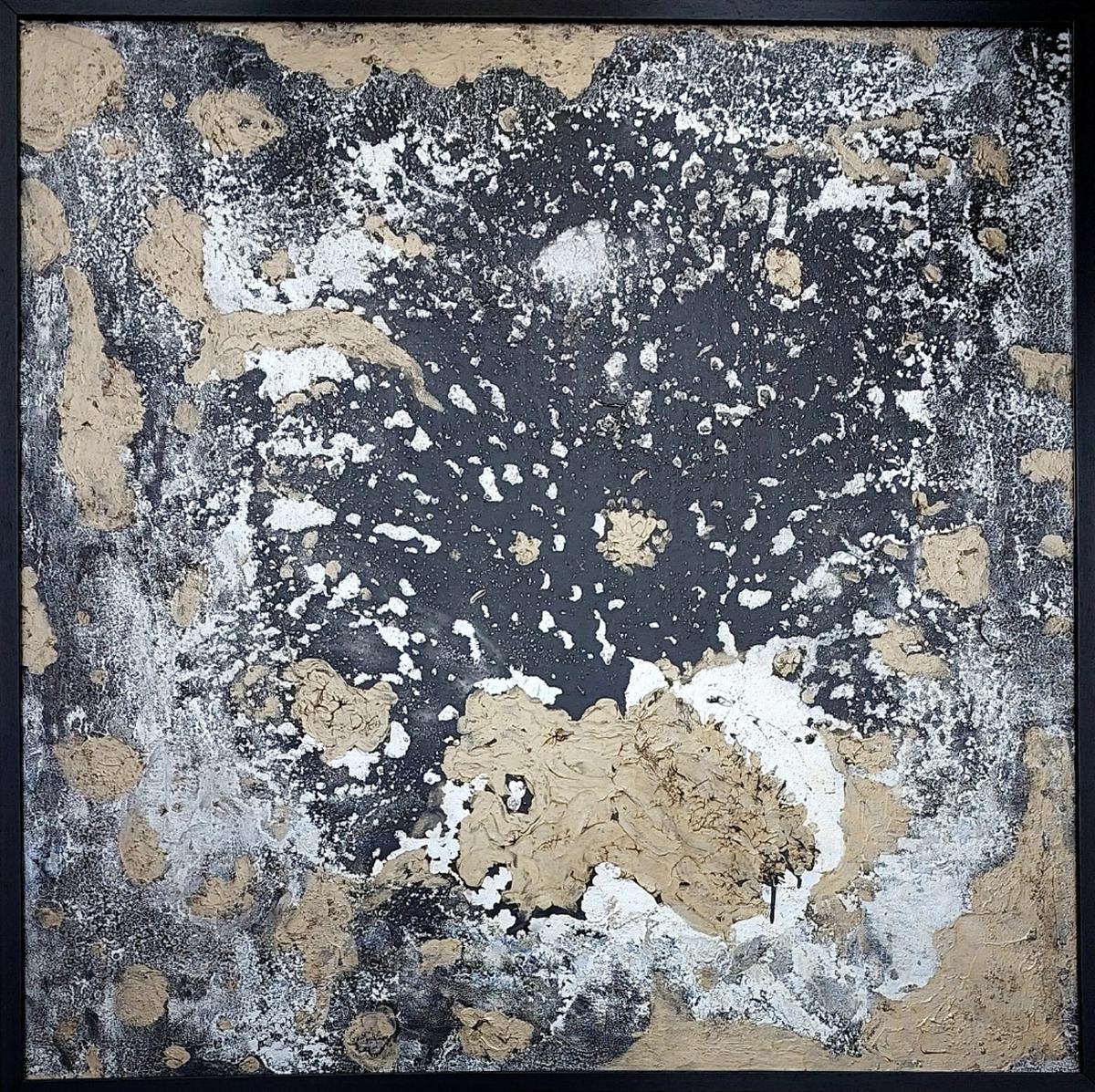
A work of art from RB Murari’s Non Objective series
| Photo Credit:
Special Arrangement
Murari is the son of RB Bhaskaran and the grandson S Dhanapal, pioneers of the art movement in South India.
“I was not too athletic and apart from reading a few books, the only other thing I’d do was paint. Today, I wouldn’t call it painting though, rather an exploring of the medium.”
“My dad would return, look at what I had done and ask me about my medium or canvas, and I’d say I had used whatever was around. He wouldn’t offer any pointers or criticism. I had no clue of the value of the materials I was using then — sometimes they were quite expensive. I was fearless and that has shaped my outlook on how I work today.”
While Murari had a free run of his father’s studio, at least whenever he was away, holidays at his grandfather’s place were a little more structured. “My grandfather had a huge studio and every evening around 30-40 children would show up wanting to learn from him, and I’d join them. He never treated me any different; he just gave us all material to work with and made me learn like everyone else,” he says, recalling one of his strongest childhood memories is waking up to a house full of artists and the smell of turpentine.
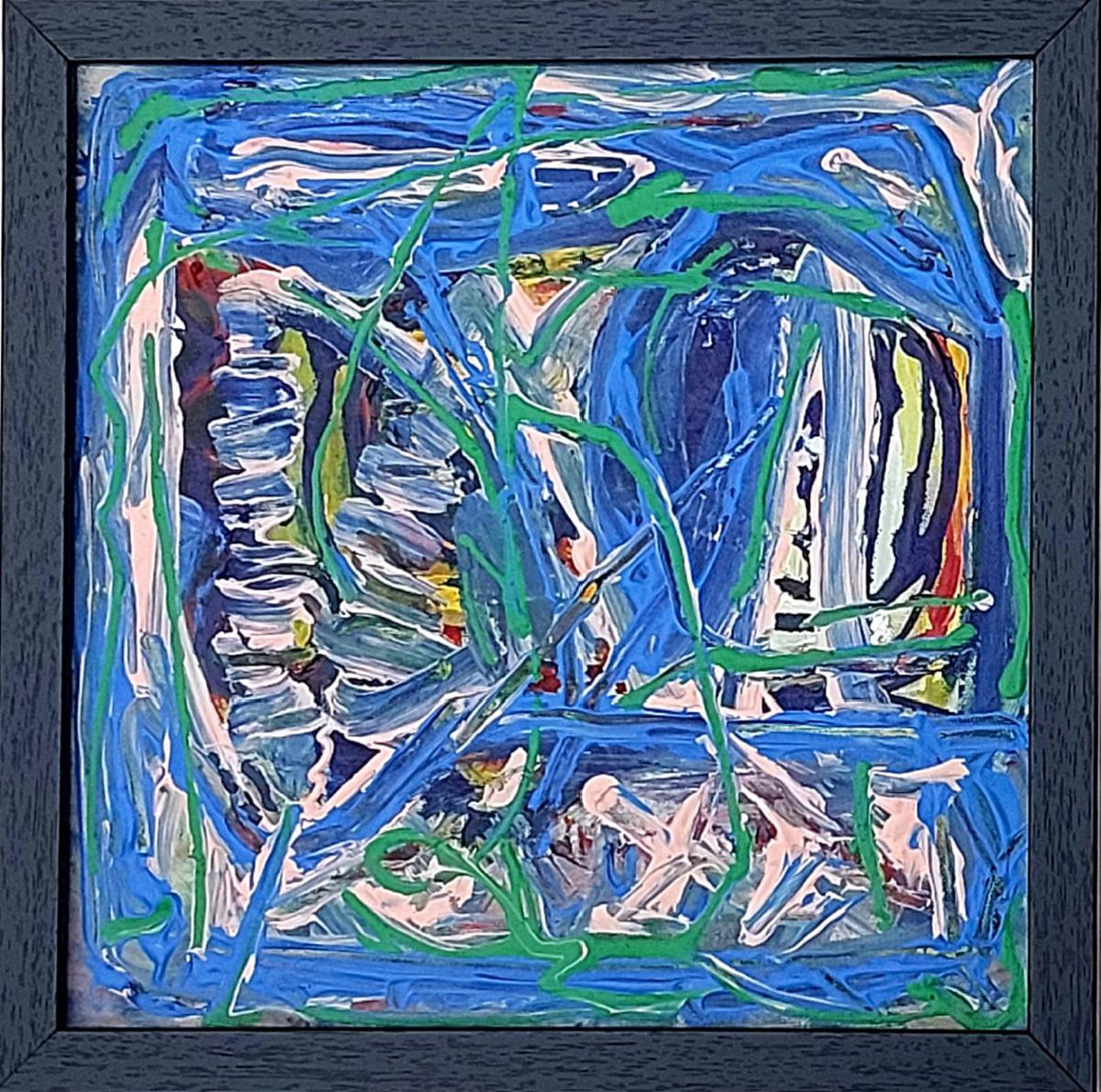
A work of art from RB Murari’s Non Objective series
| Photo Credit:
Special Arrangement
Murari continued to paint whenever he could and as a result, by the time he was 25, there were about 400-500 canvases of different sizes stacked up in his room. “I had seen my father consistently host shows irrespective of sales. And though I was painting seriously and had this large volume of work, I never really thought of a show or of selling my work.”
That was until Soli Daruwala, founder of the iconic Sarala’s Art Gallery (now Artworld) in Chennai, visited their home one evening. “My father asked him to see my work saying, “I don’t know if its any good, but he certainly uses up a lot of material”. Soli spent a couple of hours going through my work and when he left, he said, ‘Someday you will make it big’ and gave me ₹2000.”
“That was an amazing sum of money 20 years ago! At the time, I was interning at a firm with a pay of ₹5000, so I was floored. When I was 27, Soli said I had beautiful collection of work and hosted my first solo show at Sarala’s.”
“That is how I got started. I don’t paint to sell which has given me a huge edge. My father started seeing success in his mid-50s, so I was never in a rush either. Now, at age 45, I’ve been painting consistently for the past 30 years, whether I have shows or not.”
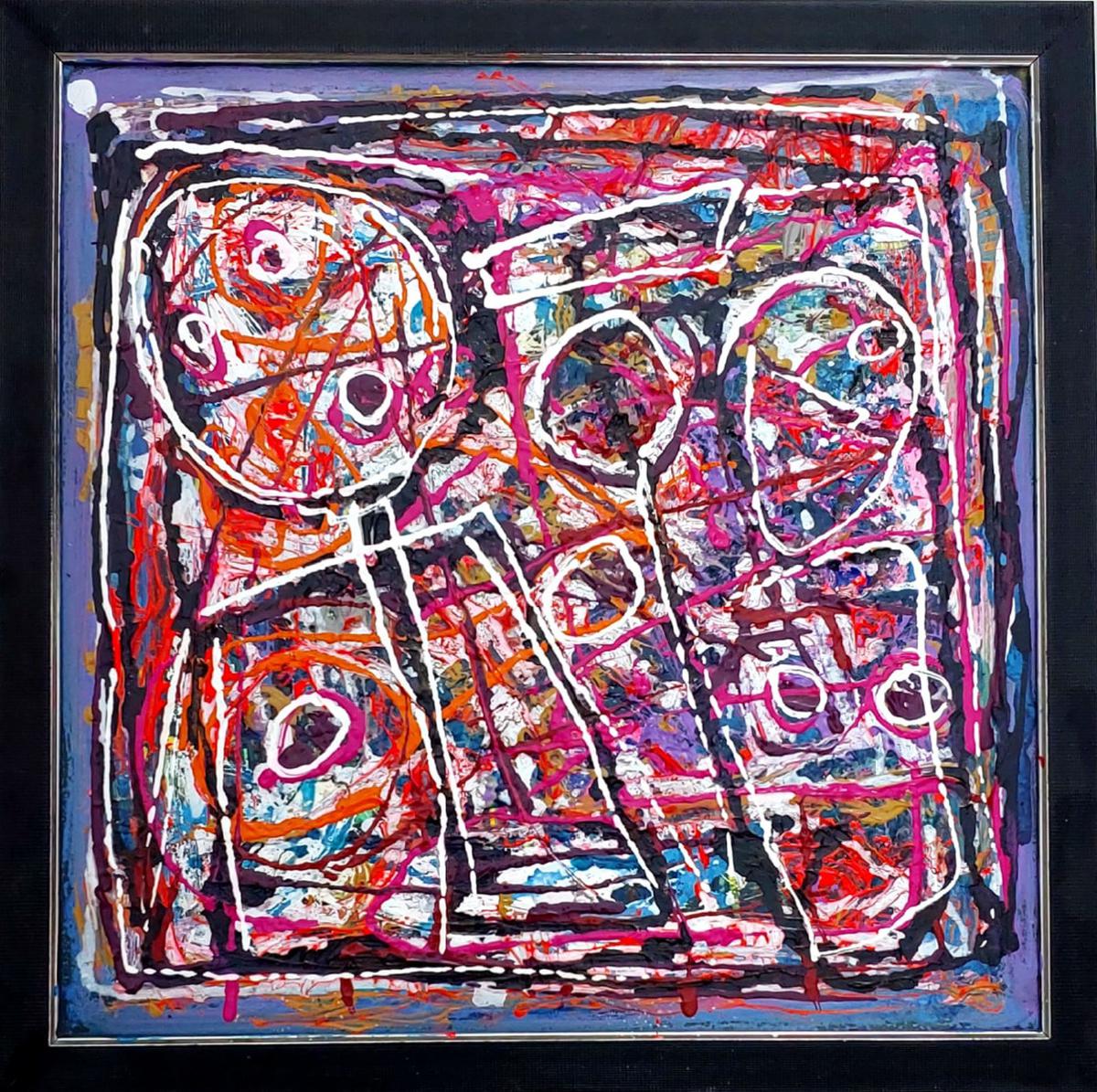
A work of art from RB Murari’s Non Objective series
| Photo Credit:
Special Arrangement
All the work exhibited at Emotive Resonance come under Murari’s Non Objective series. “The paintings I create don’t represent anything; they are more about human emotions. Like everyone else, I’ve been depressed, super happy, frustrated and at peace. I’ve found I can depend on art; it heals you and makes you strong. It is a mode of self expression.”
As passionate as he is about painting, Murari has a day job, working as the creative producer for a design team, so he doesn’t give in to “the pressures of going commercial,” he says.
Emotive Resonance is on display at MKF Museum of Art, Lavelle Road, till December 10.
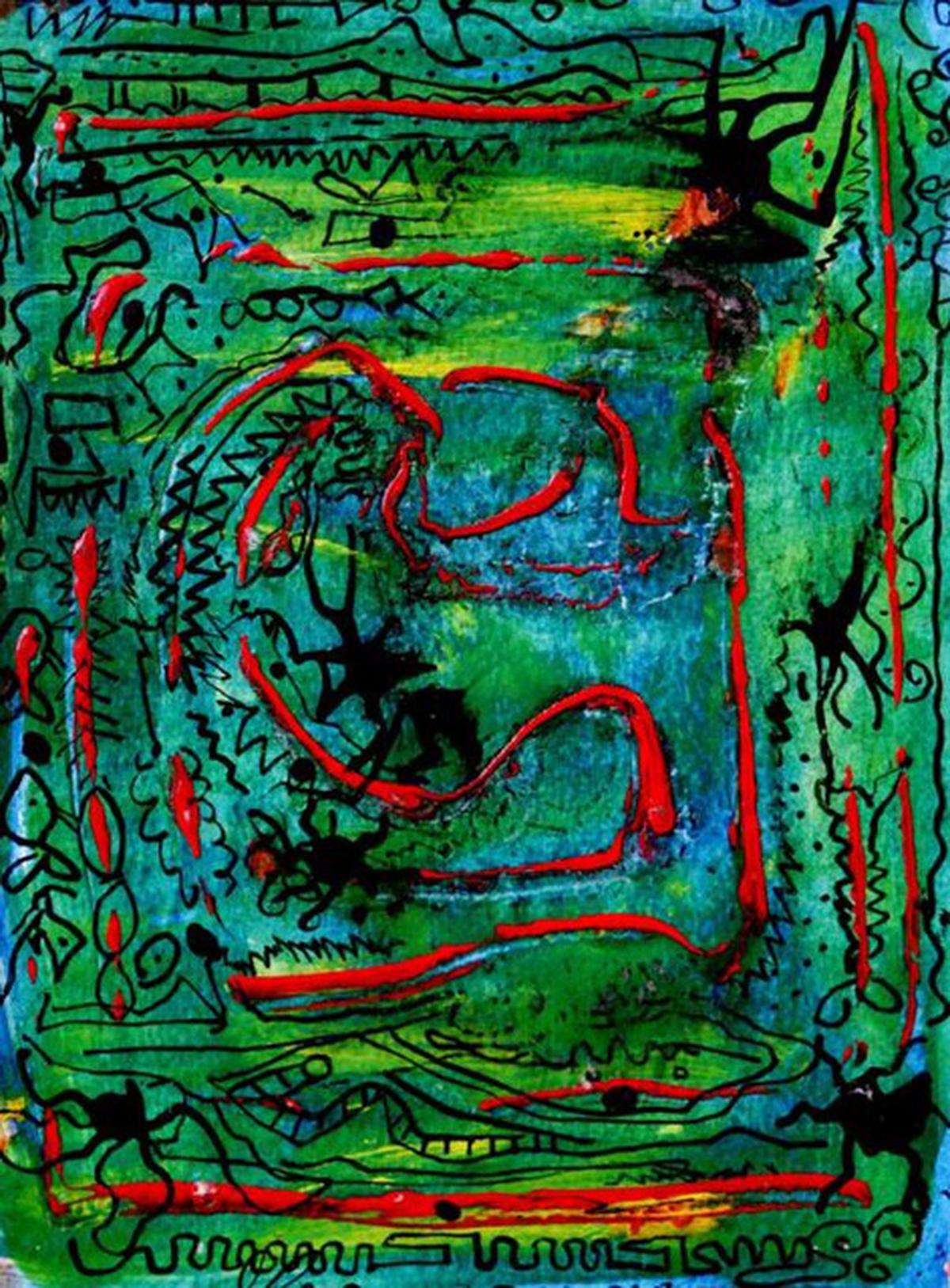
A work of art from RB Murari’s Non Objective series
| Photo Credit:
Special Arrangement
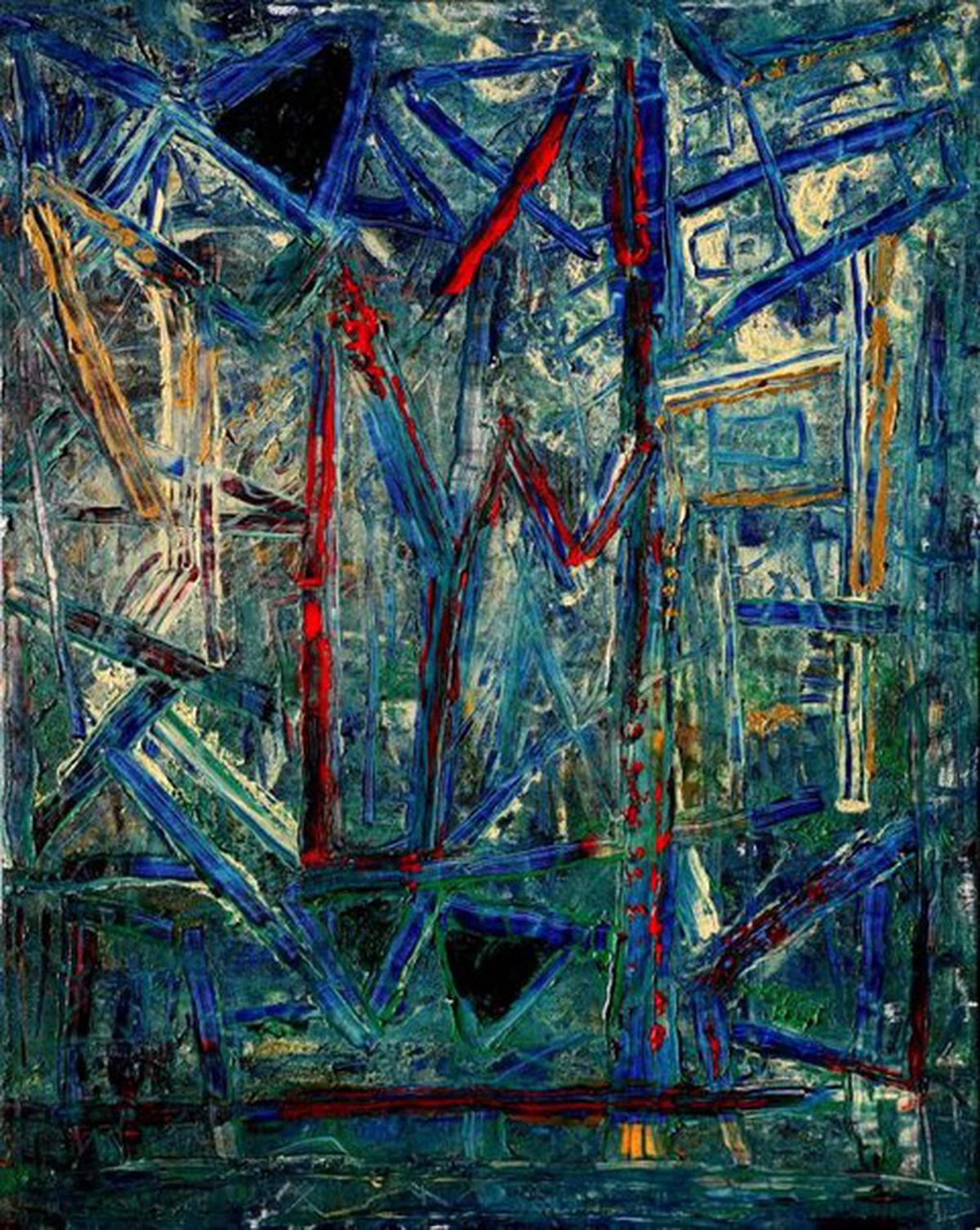
A work of art from RB Murari’s Non Objective series
| Photo Credit:
Special Arrangement